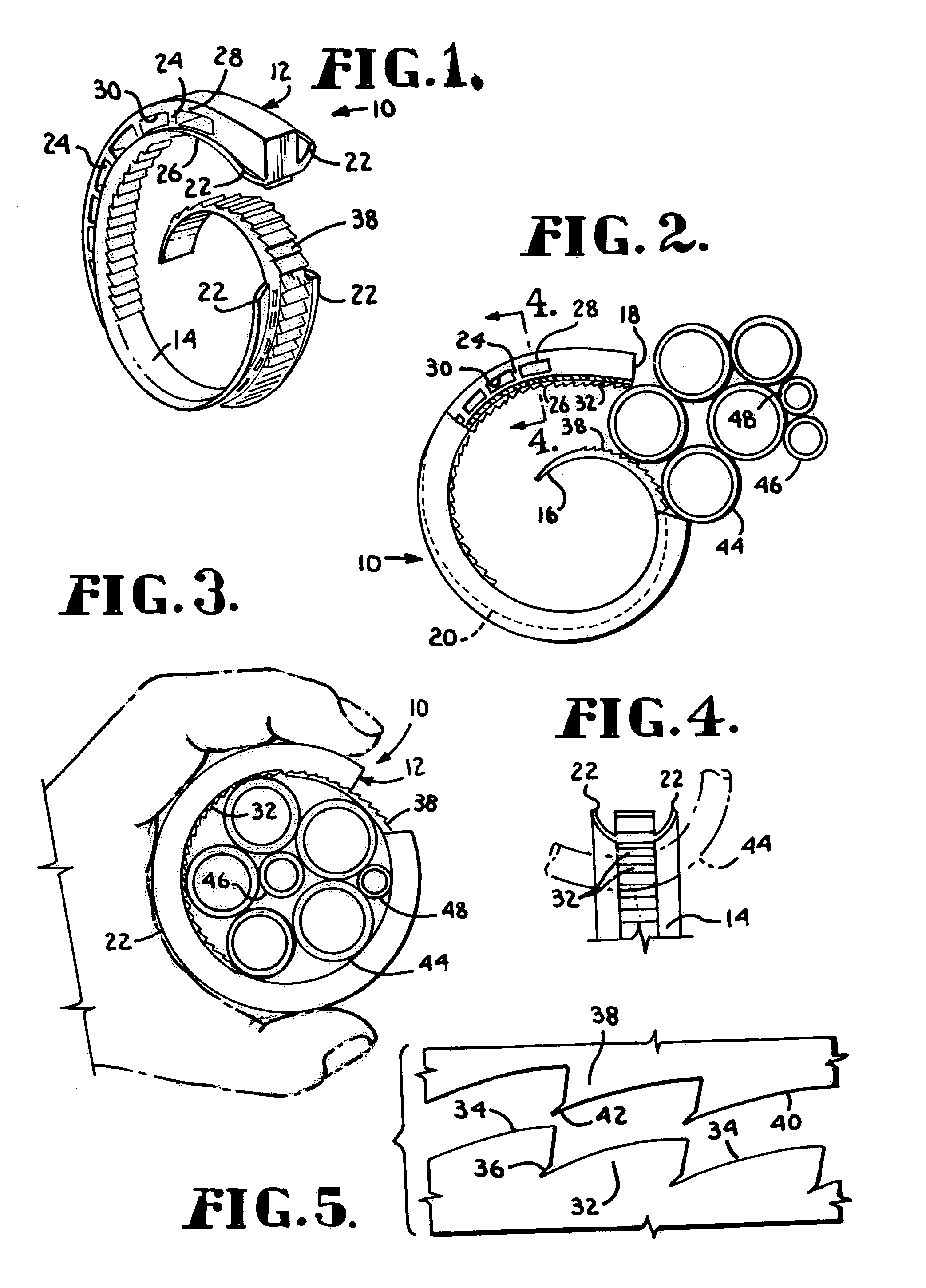Cable retention device
- Summary
- Abstract
- Description
- Claims
- Application Information
AI Technical Summary
Benefits of technology
Problems solved by technology
Method used
Image
Examples
Embodiment Construction
[0028]Referring initially to FIG. 1, the cable tie according to the present invention is designated generally by the numeral 10. Cable tie 10 comprises an annular support 12 of generally rectangular cross section and a generally convex inner face 14 which is integrally formed with annular support 12 around its circumference. The cross sectional area of the support 12 decreases significantly from one end to the other. It is desirable that the cross sectional area of the terminal end designated by the numeral 16 in FIG. 2 be 20 to 25 percent of the area of the opposite terminal end 18 (see FIG. 2). The gradually decreasing dimension of annular support 12 is indicated by broken line 20 in FIG. 2. It is also to be noted that portions of convex inner face 14 are formed by wings 22 which are integral with and project outwardly from support 12.
[0029]The construction of annular support 12 is further defined by a honeycomb structure comprising a plurality of spaced apart cross members 24 and...
PUM
 Login to View More
Login to View More Abstract
Description
Claims
Application Information
 Login to View More
Login to View More - R&D Engineer
- R&D Manager
- IP Professional
- Industry Leading Data Capabilities
- Powerful AI technology
- Patent DNA Extraction
Browse by: Latest US Patents, China's latest patents, Technical Efficacy Thesaurus, Application Domain, Technology Topic, Popular Technical Reports.
© 2024 PatSnap. All rights reserved.Legal|Privacy policy|Modern Slavery Act Transparency Statement|Sitemap|About US| Contact US: help@patsnap.com









